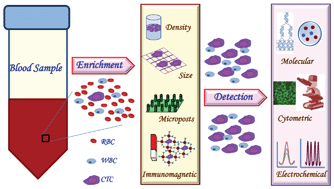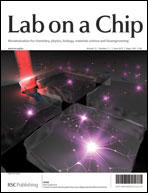Enrichment, detection and clinical significance of circulating tumor cells†
Abstract
Circulating Tumor Cells (CTCs) are shed from primary or secondary tumors into blood circulation. Accessing and analyzing these cells provides a non-invasive alternative to tissue biopsy. CTCs are estimated to be as few as 1 cell among a few million WBCs and few billion RBCs in 1 ml of patient blood and are rarely found in healthy individuals. CTCs are FDA approved for prognosis of the major cancers, namely, Breast, Colon and Prostate. Currently, more than 400 clinical trials are ongoing to establish their clinical significance beyond prognosis, such as, therapy selection and companion diagnostics. Understanding the clinical relevance of CTCs typically involves isolation, detection and molecular characterization of cells, ideally at single cell level. The need for highly reliable, standardized and robust methodologies for isolating and analyzing CTCs has been widely expressed by clinical thought leaders. In the last decade, numerous academic and commercial technology platforms for isolation and analysis of CTCs have been reported. A recent market report highlighted the presence of more than 100 companies offering products and services related to CTCs. This review aims to capture the state of the art and examines the technical merits and limitations of contemporary technologies for clinical use.


 Please wait while we load your content...
Please wait while we load your content...